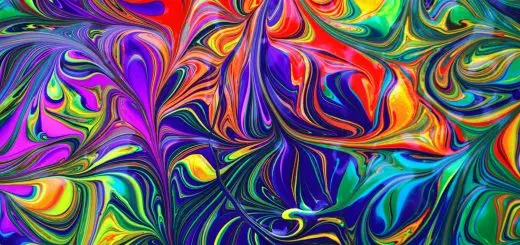The Inuit Tupilak: Magical Creature and Talisman

Looking for more amazing products? Check out our online store and explore our collection here! Happy shopping!
Before diving in, please note: This post is for informational purposes only. If you’d like to know more about how we approach topics, feel free to check out our friendly Disclaimer Page.
Hey there, amazing readers! 
We’re committed to delivering quality posts, and your support (even just sticking around despite the ads) means everything to us. So, bear with us, and thanks for helping us keep the good vibes rolling. Now, on to the fun stuff!
TRANSLATE BUTTON AT THE END OF THE ARTICLE
Introduction to the Inuit Tupilak
In Inuit mythology, the Tupilak is a magical creature and talisman that holds great significance in the indigenous culture of the Arctic region.
The word “Tupilak” translates to “soul of an ancestor” or “that which has been given life” in the Inuit language.
These mystical beings are believed to be created by shamans or individuals with supernatural powers to protect them from enemies, seek revenge, gain power, or even bring harm to others.
The Tupilak is intricately linked to Inuit traditions and spirituality, representing a connection between the human world and the supernatural realm.
Origins and Significance of Tupilak in Inuit Culture
The origins of the Tupilak can be traced back to ancient Inuit beliefs and practices.
Inuit mythology holds that the Tupilak is a manifestation of the spiritual energy and power of those who create it.
It is believed that these creatures are formed by gathering various natural materials such as bones, teeth, fur, feathers, and even human remains.
These objects are then carefully crafted and imbued with spiritual energy through rituals and incantations.
The Tupilak is considered a representation of the creator’s desires and intentions, acting as a guardian or a bringer of harm, depending on its purpose.
Exploring the Mystical Powers of Tupilak
The Tupilak is believed to possess a range of mystical powers.
It is said that these creatures can travel between the physical and spiritual realms, bridging the gap between the human and supernatural worlds.
Inuit shamans would often use the Tupilak to communicate with spirits, seek guidance, or channel their own powers.
The Tupilak is also thought to have protective qualities, warding off evil spirits and bringing good luck to its creator.
However, it is important to note that the powers attributed to the Tupilak vary depending on the intentions of its creator and the rituals performed during its creation.
Tupilak: Guardian Spirits and Protective Talismans
In Inuit culture, the Tupilak is seen as a guardian spirit and a protective talisman.
It is believed that these creatures have the ability to ward off evil, protect individuals, families, and communities from harm, and even bring prosperity and good fortune.
Tupilaks were often kept in homes, carried on the person, or placed near hunting grounds to ensure the safety and success of hunting expeditions.
The belief in the protective qualities of the Tupilak reflects the Inuit’s deep connection with nature and their reliance on the spiritual world for guidance and support.
Crafting and Symbolism of Tupilak Figures
Crafting a Tupilak requires intricate skill and knowledge of traditional techniques.
The process begins by selecting the appropriate materials, which are often sourced from nature.
These materials are then carefully arranged and shaped to form the desired creature.
The symbolism of the Tupilak figure is crucial, as each element represents a specific aspect of Inuit culture and spirituality.
For example, the use of bones may symbolize the connection to ancestors, while feathers may represent the power of birds in Inuit mythology.
The final result is a unique and highly personalized representation of the creator’s intentions and desires.
Traditional Materials Used in Tupilak Making
Traditionally, the Inuit used a variety of natural materials in the creation of Tupilaks.
These materials were carefully chosen for their symbolic significance and spiritual properties.
Common materials include bones, teeth, fur, feathers, and stones.
Bones and teeth were often sourced from animals such as polar bears, whales, or walruses, while fur and feathers were obtained from birds and other mammals.
These materials were believed to hold the spiritual essence of the animals they came from, adding to the power and significance of the Tupilak.
Cultural Practices Surrounding Tupilak Rituals
The creation and use of Tupilaks were accompanied by various cultural practices and rituals.
Inuit shamans or individuals with spiritual knowledge would perform ceremonies to invoke the spirits and infuse the Tupilak with their desired qualities.
These rituals often involved chanting, drumming, dancing, and other forms of spiritual communication.
Tupilaks were also used in communal ceremonies and gatherings, where they played a central role in connecting the community with the spiritual realm.
These practices were not only crucial for the creation of the Tupilak but also served to strengthen the bonds within the community and reinforce cultural values.
Myths and Legends Associated with Tupilak
The Tupilak is surrounded by a rich tapestry of myths and legends in Inuit folklore.
These stories often depict the Tupilak as both a powerful ally and a formidable adversary.
In some legends, the Tupilak is summoned to protect individuals or communities from danger, while in others, it is used as a tool for revenge or harm.
These tales serve as cautionary stories, illustrating the importance of intention and responsibility when dealing with powerful spiritual forces.
The myths and legends associated with the Tupilak not only entertain and educate but also contribute to the preservation of Inuit cultural heritage.
Modern Interpretations and Commercialization of Tupilak
In recent years, there has been a growing interest in the Tupilak beyond the realm of traditional Inuit culture.
The mystical allure and artistic craftsmanship of these creatures have gained attention worldwide, leading to their commercialization and adaptation for the global market.
Tupilak figures are now sought after as collectibles, decorative items, and even symbols of cultural identity.
While this increased visibility can bring awareness to Inuit traditions and craftsmanship, it is crucial to ensure that the cultural significance and integrity of the Tupilak are respected and preserved.
Conservation Efforts to Preserve Tupilak Traditions
Recognizing the importance of preserving the traditions surrounding the Tupilak, conservation efforts have been initiated to safeguard its cultural heritage.
Inuit communities and organizations are working towards revitalizing traditional practices, passing down knowledge to future generations, and promoting sustainable methods of creating Tupilaks.
These efforts aim to maintain the authenticity and cultural significance of the Tupilak while adapting to the challenges and opportunities of the modern world.
By fostering awareness and appreciation for the Tupilak, these conservation initiatives contribute to the preservation of Inuit culture and identity.
The Future of Tupilak: Maintaining Cultural Heritage
As the world evolves, it is crucial to ensure that ancient traditions like the Tupilak continue to thrive.
Preserving the cultural heritage associated with the Tupilak requires a delicate balance between tradition and adaptation.
By embracing modern technologies and materials without compromising the essence of the Tupilak, Inuit communities can celebrate their cultural heritage and share it with the world.
Education, cultural exchange programs, and collaborations with artists and researchers can further enhance the understanding and appreciation of the Tupilak’s significance.
Through these efforts, the Tupilak can continue to be a powerful symbol of Inuit identity and spirituality for generations to come.
Conclusion
The Inuit Tupilak holds a significant place in Arctic indigenous culture, representing a bridge between the physical and supernatural realms.
Created by shamans or individuals with supernatural powers, these mystical creatures serve as guardian spirits and protective talismans.
Crafted from traditional materials and imbued with symbolism, the Tupilak embodies the desires and intentions of its creator.
The creation and use of Tupilaks are accompanied by cultural practices, rituals, and myths that contribute to the preservation of Inuit traditions.
As the Tupilak gains global recognition, conservation efforts are underway to maintain its cultural heritage while embracing the opportunities of the modern world.
By ensuring the Tupilak’s authenticity and promoting awareness, Inuit communities can continue to celebrate their cultural identity while sharing their traditions with the world.

The Enlightenment Journey is a remarkable collection of writings authored by a distinguished group of experts in the fields of spirituality, new age, and esoteric knowledge.
This anthology features a diverse assembly of well-experienced authors who bring their profound insights and credible perspectives to the forefront.
Each contributor possesses a wealth of knowledge and wisdom, making them authorities in their respective domains.
Together, they offer readers a transformative journey into the realms of spiritual growth, self-discovery, and esoteric enlightenment.
The Enlightenment Journey is a testament to the collective expertise of these luminaries, providing readers with a rich tapestry of ideas and information to illuminate their spiritual path.
Our Diverse Expertise
While our primary focus is on spirituality and esotericism, we are equally passionate about exploring a wide range of other topics and niches 

To ensure we provide the most accurate and valuable insights, we collaborate with trusted experts in their respective domains 
Our blog originally focused on spirituality and metaphysics, but we’ve since expanded to cover a wide range of niches. Don’t worry—we continue to publish a lot of articles on spirituality! Frequently visit our blog to explore our diverse content and stay tuned for more insightful reads.
Hey there, amazing reader! 
Check out our store here and take a peek at some of our featured products below! Thanks for being awesome!












